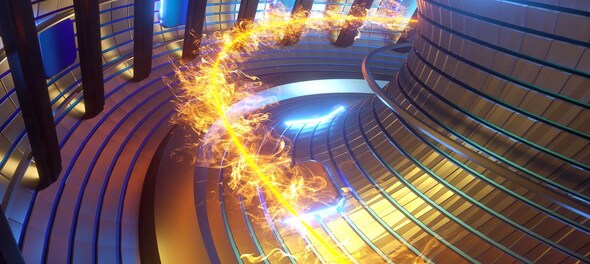
Scientists in the United States hit a milestone this month by achieving a net energy gain in a fusion experiment using lasers. This is considered a "breakthrough" for two reasons: One, it is for the first time that scientists achieved the phenomenon known as ignition — in which the nuclear reaction or fusion produced more energy than it consumed.
Second, this phenomenon has given hope for clean power. It is expected that one day, this fusion energy will help curb climate change if companies are able to scale up the technology to a commercial level and generate power. This will also help, the Biden Administration in "maintaining a nuclear deterrent without nuclear testing," the Lawrence Livermore National Laboratory's
“Ignition allows us to replicate for the first time certain conditions that are found only in the stars and the sun,″ Energy Secretary Jennifer Granholm told a news conference in Washington. “This milestone moves us one significant step closer” to having zero-carbon fusion energy “powering our society".
This doesn’t mean that "we’re going to see fusion power on the grid tomorrow", said Anne White, head of nuclear science and engineering at MIT. One must note that this experiment was conducted at a much lower scale and therefore, much more research is required to be done before fusion becomes commercially viable.
How much more is required to commercialise fusion
Tony Roulstone, a nuclear energy expert at the University of Cambridge, was quoted by Reuters as saying that the energy output of the experiment was only 0.5 percent of the energy that was needed to fire the lasers in the first place. In order to become commercial, a power plant would have to produce enough energy to power the lasers and to achieve ignition continuously.
"To realise commercial fusion energy, you have to... be able to produce many, many fusion ignition events per minute," Kimberly Budil, the director of Lawrence Livermore
Budil added that hurdles in science and technology mean commercialisation is probably not five or six decades away, but sooner. "With concerted effort and investment, a few decades of research on the underlying technologies could put us in a position to build a power plant," Budil said.
This breathrough was achieved at the Lawrence Livermore National Laboratory's National Ignition Facility on December 5. Though not an immediate practical route to fusion power, this is a goal researchers have been chasing since the 1950s.
So, what's next now?
The next step for fusion after reaching net gain is to produce much more energy than what’s supplied, instead of just a bit more, Anne White was quoted as saying by the MIT (Massachusetts Institute of Technology) Technology Review magazine.
"This is especially important in inertial confinement approaches because lasers aren’t very efficient, so they take more energy from the grid than they provide to the fusion reactor. So while within the reactor there was net energy gain, in reality producing that 3.15 megajoules took about 300 megajoules from the grid," the MIT review said.
Besides, researchers are also seeing a path to producing hundreds of megajoules of energy in reactions instead of just a few, said Lawrence Livermore director Kim Budil during a press conference on Tuesday.
Meanwhile, according to Reuters, the electricity industry emphasised that in order to carry out the energy transition, fusion should not slow down efforts on building out other alternatives like solar and wind power, battery storage and nuclear fission.
Now, as there's a long way to go when fusion energy will be used at power plants, "everyone is excited about what's been achieved and what's in the future."
(With inputs from agencies)
First Published: Dec 14, 2022 4:16 PM IST
Check out our in-depth Market Coverage, Business News & get real-time Stock Market Updates on CNBC-TV18. Also, Watch our channels CNBC-TV18, CNBC Awaaz and CNBC Bajar Live on-the-go!


Mark Mobius reveals how markets will react if NDA wins 400+ Lok Sabha seats
May 15, 2024 8:09 PM
Wine shops and bars to remain shut for 4 days in Mumbai in 4 weeks, check details
May 15, 2024 7:52 PM
INDIA bloc will win majority seats in Bihar, says Tejashwi Yadav
May 15, 2024 4:20 PM

